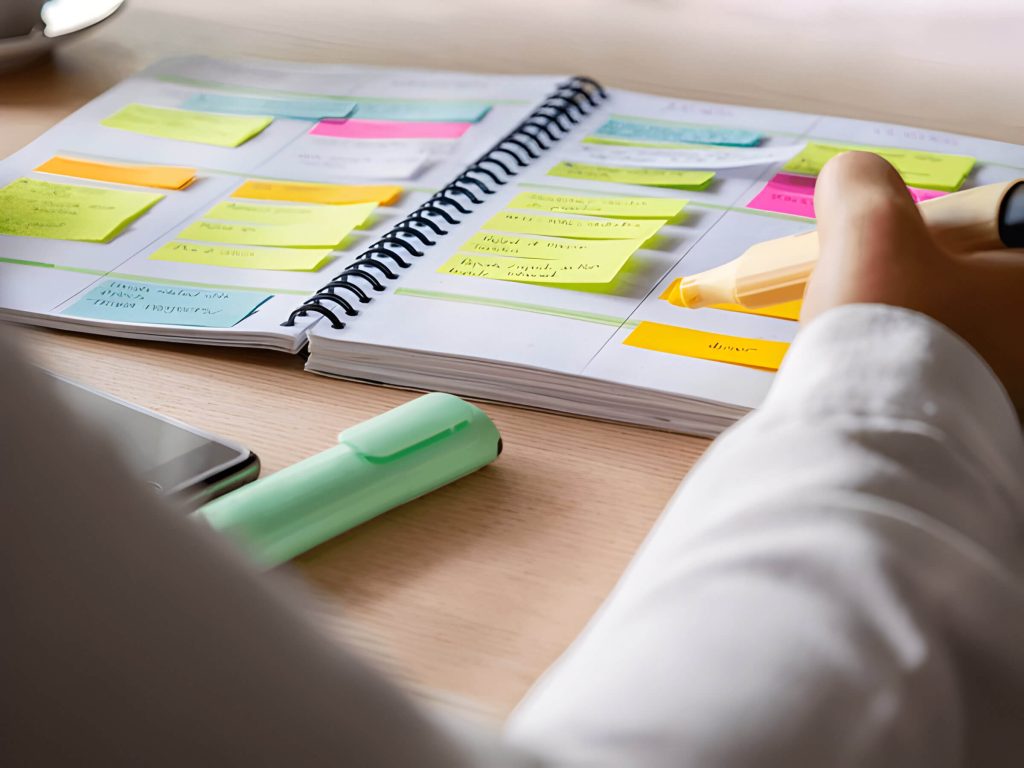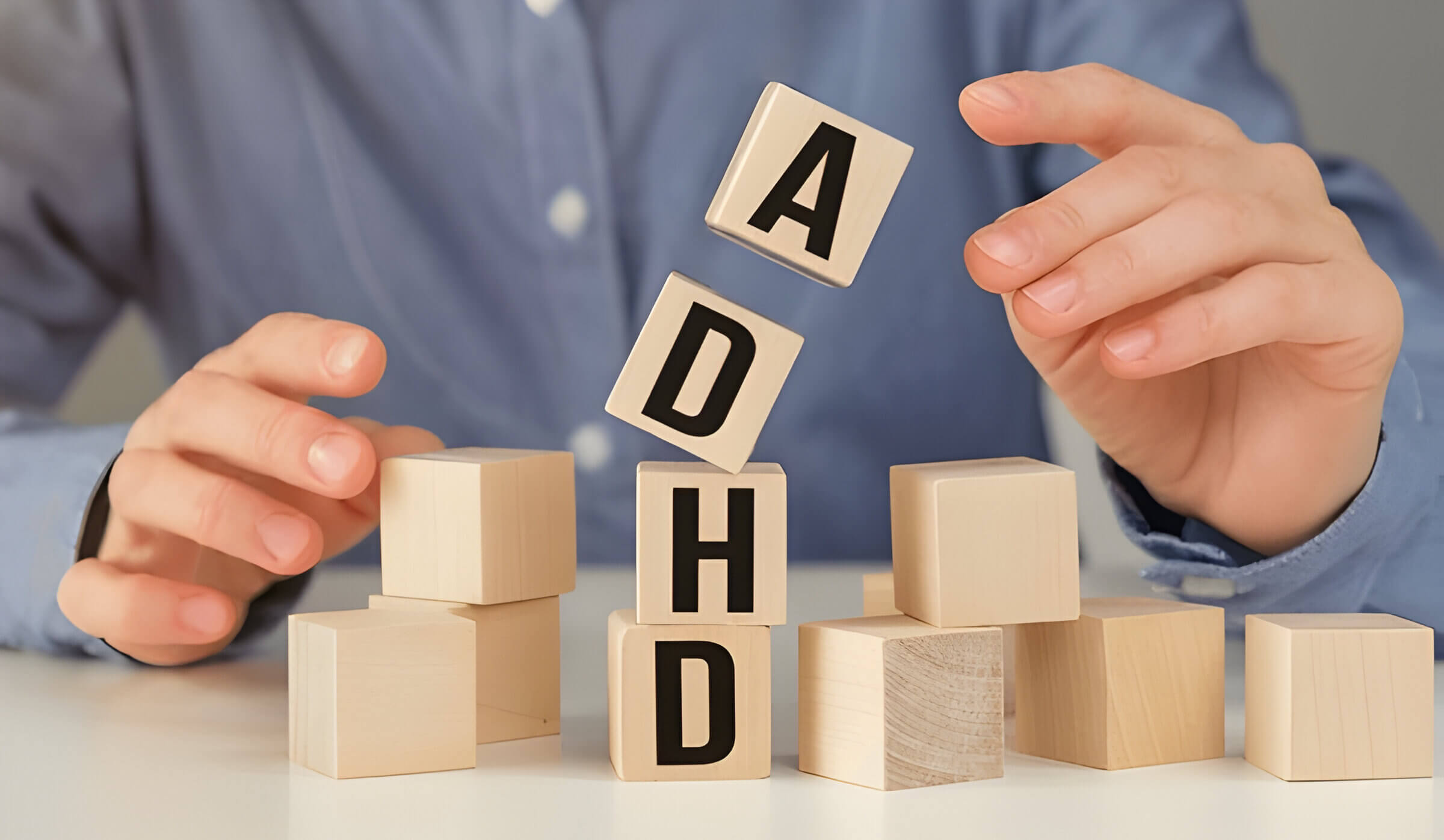Struggling with ADHD paralysis can hinder productivity and make tasks feel insurmountable. This guide offers seven strategies to overcome this challenge and enhance efficiency. From breaking tasks into steps to using time management techniques like the Pomodoro Method, these tips cater to individuals with ADHD. By setting clear goals, using organizational tools, creating a supportive environment, practicing mindfulness to stay present and focused, and seeking professional help when needed, you can regain control and boost productivity.
1. Break Tasks into Smaller Steps to Manage Overwhelm
Managing overwhelm, especially for individuals with ADHD, can be significantly improved by breaking tasks into smaller, more manageable steps. This approach, known as task breakdown or task segmentation, is a cornerstone of effective project management for ADHD.
The concept is simple yet powerful: instead of tackling a large task all at once, divide it into smaller steps that are easier to handle. This approach can bring a sense of relief, especially for those with ADHD, as each small step feels less daunting and provides a clear path forward. For instance, if you need to write a report, you could break it down into steps such as researching the topic, creating an outline, writing the introduction, and so on.
Task segmentation not only makes the workload seem more manageable but also helps maintain focus and motivation. Each completed step brings a sense of accomplishment and progress, which can be particularly beneficial for those struggling with attention regulation. By consistently applying this method in your daily routine or larger projects, you create an organized framework that supports productivity and reduces feelings of overwhelm.
In summary, breaking tasks into smaller steps is an effective strategy in project management for ADHD. It simplifies complex tasks into achievable actions and fosters a structured approach to managing responsibilities without becoming overwhelmed.
2. Use Time Management Techniques like the Pomodoro Method
Effective time management is crucial for enhancing productivity, especially for individuals with ADHD. One highly recommended technique is the Pomodoro Method. This method involves breaking work into intervals, usually 25 minutes in length, separated by short breaks. These intervals are called “Pomodoros,” named after the Italian word for tomato, inspired by the tomato-shaped kitchen timer.
The Pomodoro Technique can be particularly beneficial for managing time with ADHD because it creates a structured environment and reduces the overwhelming feeling of large tasks. By focusing on one task at a time within a set period, it helps to minimize distractions and maintain concentration.
Another useful strategy is time blocking, which involves dedicating specific blocks of time to different tasks or activities throughout your day. This method can help create a visual schedule that makes it easier to stay on track and ensures that high-priority tasks receive adequate attention.
Integrating these productivity techniques into your daily routine can significantly improve your ability to manage time effectively. Whether you choose the Pomodoro Technique or time blocking, both methods offer structured approaches that cater to the unique challenges faced by individuals with ADHD.
3. Set Clear and Achievable Goals to Stay Focused

Setting clear and achievable goals is a crucial strategy for maintaining focus, especially for individuals with ADHD. Goal setting for ADHD involves breaking down larger tasks into smaller, more manageable objectives. By doing so, it becomes easier to stay on track and avoid feeling overwhelmed.
Start by defining what you want to achieve in specific terms. Clear objectives provide a roadmap that guides your actions and decisions. For example, instead of setting a vague goal like “be more organized,” aim for something concrete such as “spend 10 minutes every evening organizing my workspace.”
Achievable goals are equally important. Setting the bar too high can lead to frustration and loss of motivation. Focus strategies recommend starting with small, attainable steps that build confidence and create momentum. For instance, if you’re working on a big project, break it down into daily or weekly tasks that contribute to the overall goal.
By setting clear and achievable goals, you create a structured environment where focus can thrive. This approach not only helps in managing ADHD but also enhances productivity and overall well-being.
4. Implement Organizational Tools and Systems to Stay on Track
Implementing organizational tools and systems is crucial for staying on track, especially for individuals with ADHD. The right tools can make a significant difference in managing daily tasks and long-term projects effectively. Here are four key strategies to consider:
1. Utilize Organizational Tools for ADHD: There are numerous tools specifically designed to help individuals with ADHD manage their time and tasks better. These include planners that break down tasks into smaller, manageable steps, visual timers to keep track of time spent on activities, and reminder apps that prompt you about upcoming deadlines.
2. Adopt Robust Planning Systems: A well-structured planning system can be a game-changer. Systems like the Eisenhower Matrix or the Bullet Journal Method can help prioritize tasks based on urgency and importance. By categorizing your responsibilities, you can focus on what truly matters without feeling overwhelmed.
3. Leverage Task Management Apps: Modern task management apps like Todoist, Trello, or Asana offer features tailored to enhance productivity and organization. These apps allow you to create detailed task lists, set deadlines, assign priorities, and even collaborate with others seamlessly.
4. Follow Practical Organizational Tips: Simple yet effective tips such as decluttering your workspace regularly, setting specific goals for each day, and breaking down large projects into smaller tasks can significantly improve your organizational skills. Additionally, establishing a consistent routine helps in maintaining a structured approach to daily activities.
By integrating these organizational tools and systems into your daily life, you can enhance productivity and reduce the stress associated with managing multiple responsibilities simultaneously.
5. Create a Supportive Environment with Minimal Distractions
Creating a supportive environment with minimal distractions is crucial for enhancing productivity, especially for individuals with ADHD. An ADHD-friendly environment can significantly reduce distractions and help maintain focus on tasks. Here are five strategies to create such a workspace:
1. Organize Your Space: A clutter-free workspace can make a world of difference. Keep your desk tidy by using organizers for papers, pens, and other office supplies. An organized space reduces visual distractions and helps you find what you need quickly.
2. Use Noise-Canceling Headphones: Background noise can be a significant distraction. Investing in noise-canceling headphones can help block out unwanted sounds, allowing you to concentrate better on your work.
3. Implement Time Management Techniques: Techniques like the Pomodoro Technique, which involves working in short bursts followed by breaks, can enhance focus and productivity. Use timers to remind yourself when it’s time to take a break or switch tasks.
4. Create Visual Cues: Use sticky notes or whiteboards for reminders and to-do lists. Visual cues can help keep important tasks at the forefront of your mind without overwhelming you with information.
5. Personalize Your Environment: Tailor your workspace to suit your needs by adding elements that make you feel comfortable and focused, such as plants or personal photos. A supportive workspace that feels personalized can boost motivation and productivity.
By implementing these strategies, you can create an ADHD-friendly environment that reduces distractions and supports sustained productivity throughout the day.
6. Practice Mindfulness and Relaxation Techniques to Reduce Stress
Mindfulness and relaxation techniques are powerful tools for managing stress, especially for individuals dealing with ADHD paralysis. Practicing mindfulness involves focusing on the present moment and observing your thoughts and feelings without judgment. This practice can help reduce stress by promoting a sense of calm and clarity.
One effective mindfulness practice is deep breathing exercises. By taking slow, deep breaths, you can activate your body’s relaxation response, which helps lower heart rate and blood pressure. Another technique is progressive muscle relaxation, where you systematically tense and then relax different muscle groups in your body to release physical tension.
Incorporating regular meditation into your routine can also be beneficial. Even just a few minutes of seated meditation each day can help improve focus and decrease anxiety levels. Guided imagery is another helpful technique; it involves visualizing peaceful scenes or scenarios to create a sense of tranquility.
For those with ADHD paralysis, structured mindfulness practices like these can be particularly valuable. They offer a way to break the cycle of overwhelming thoughts and bring attention back to manageable tasks at hand.
By integrating these mindfulness practices into daily life, individuals can experience significant stress reduction, leading to improved mental well-being and productivity.
7 . Seek Professional Help When Needed
Managing ADHD can be challenging, and sometimes professional help is essential for effective treatment and support. Seeking professional help for ADHD can provide you with tailored strategies to manage symptoms and improve daily functioning.
Therapy Options: Various therapy options are available to individuals with ADHD. Cognitive Behavioral Therapy (CBT) is particularly effective in helping patients develop coping strategies, organizational skills, and emotional regulation techniques. Other therapeutic approaches like mindfulness-based therapies can also be beneficial.
Coaching Support: ADHD coaches specialize in helping individuals set goals, develop time management skills, and maintain focus on tasks. Coaching support can be a valuable resource for both children and adults with ADHD, providing personalized guidance to navigate daily challenges.
Medical Advice: Consulting a healthcare provider for medical advice is crucial when managing ADHD. A medical professional can evaluate your symptoms, provide a diagnosis, and discuss medication options if necessary. Medications such as stimulants or non-stimulants may be prescribed to help regulate attention and behavior.
Seeking professional help ensures that you have access to the best resources and expertise available, allowing you to effectively manage your ADHD symptoms and lead a more balanced life.


